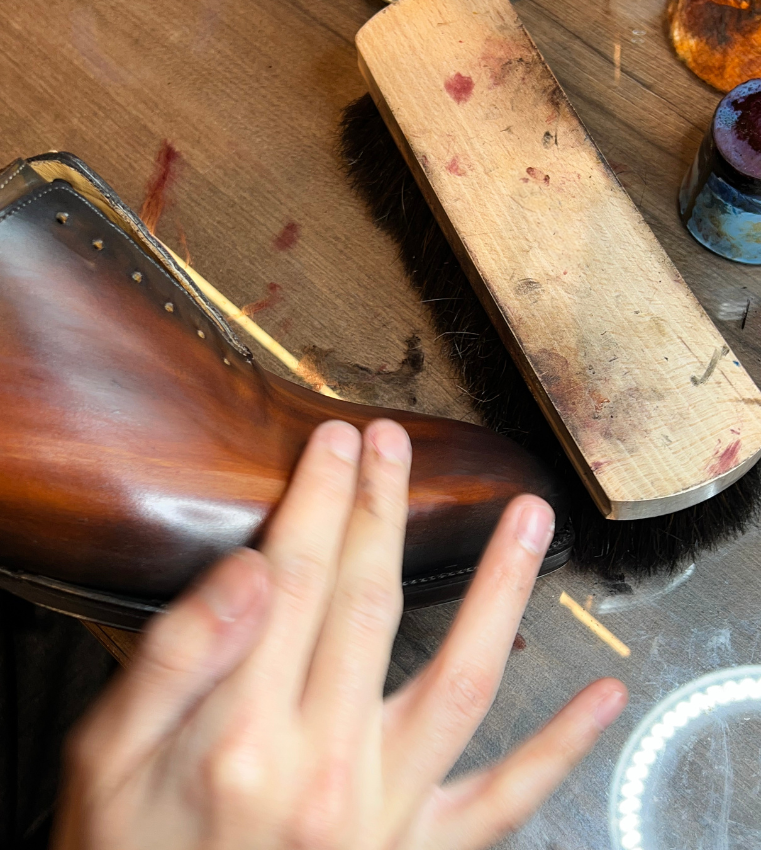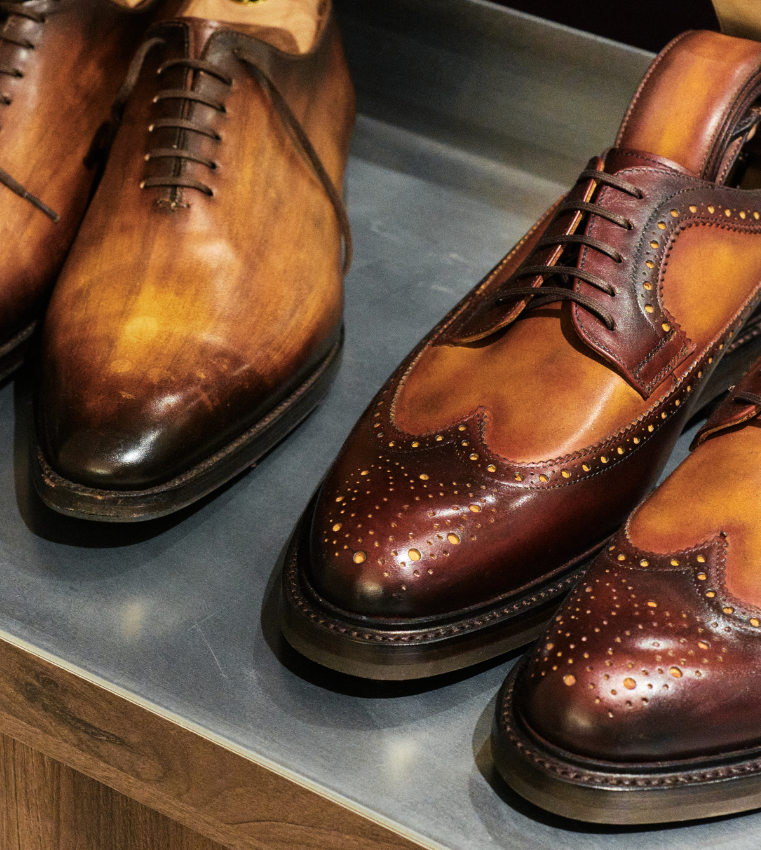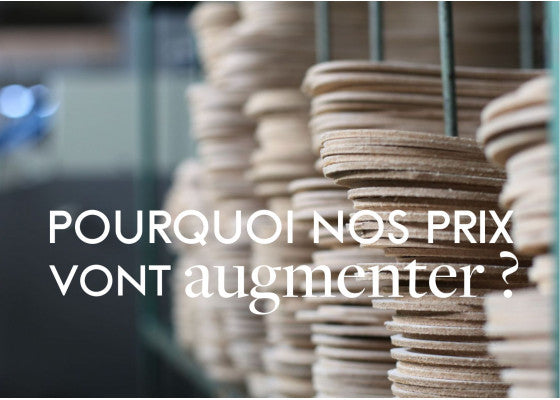There are very few tanneries in the UK: they have fallen from 300 to around 30 today. One of the oldest is the Charles F. Stead family tannery in Leeds, which has been producing the highest quality suede calfskin and smooth leather since the 1890s

There are very few tanneries in the UK: they have fallen from 300 to around 30 today. One of the oldest is the Charles F. Stead family tannery in Leeds, which has been producing the highest quality suede and smooth leather since the 1890s. Without most of us knowing it, cowhides Charles F. Stead shoes have been used for some of the most iconic shoes on the market (including Clarks' famous Desert Boots). In this article we will present the history of this historic house;
Charles, an excellent apprentice
Charles F. Stead learned his trade as an apprentice at Thomas Wright & Co. Ltd in the 1890s. His good customer relationships and product knowledge helped him excel as a salesman. After gaining a lot of experience in the business, Charles decided to start his own business, in a small premises on St. Anne's Street, near the city center of Leeds, United Kingdom.
The start of production
With business booming, he took over the Sheepscar tannery. Some of the current buildings date from 1823. The Meanwood valley in which Sheepscar was based had many tanneries, all dependent on fresh water from Meanwood Beck.

The original leathers, produced from 1904 by Charles F. Stead, came from domestic sheepskins intended for making book bindings, chamois, and "fancy" leathers (the term "fancy" referred to leathers for wallets , handbags, bags, etc.).
The arrival of the steam engine
In the 1910s, with demand increasing, a new steam engine was needed to turn the large wooden drums used in the "Chrome" tanning process (post coming soon). Subsequently, the electric generator was revolutionary and produced enough power for machines as well as lighting.

Birth of a love story
The 1920s saw the birth of the English love affair with “ suede ” shoes. It started with a member of the royal family, Edward, Duke of Windsor, "the best dressed man of the 1920s", who caused a sensation by wearing his brown suede shoes with his dark blue suit.

Despite the growth of the leather industry, the 1920s also saw an unfortunate tragedy: Charles F. Stead was involved in a car accident and sadly died. This forced his second son, 22-year-old Phillip K. Stead, to take control of the company. He began to gradually (and significantly!) change the methods used for drying and tanning deer hide and calf hide

Leather enters the world of fashion
The 1930s saw the introduction of the “Perfecto” leather jacket and, with it, the famous “bad boy biker” image that burst onto the fashion scene. This image gained reputation through brands like Harley Davidson and was later immortalized in the glamor of Hollywood's golden age. Leather was no longer just a durable material, but also a fashion element in its own right.

Velvet calfskin by Stead
The Stead tannery sources its raw materials from the United Kingdom, Northern Europe, New Zealand, South Africa (Kudu) and Argentina. Typically, Stead Tannery suede calfskins shrink 15-30% of their original size during production (i.e. some hide surface is lost). At first glance, this is commercial suicide and is the opposite of the way of thinking of most tanneries specializing in this type of leather, who seek to gain the maximum surface area at each stage. However, it is this very particular structure of the fibers which is the basis of their reputation since their specialization in suede calfskin 60 years ago. This tighter fiber structure compared to other “suedes” is responsible for the unique appearance and improved wear properties of their leathers. It is from them that we source the back part of the models in suede calfskin. Also worth discovering: suede calfskin from the Italian tannery Sciarada (article to come).

FAQ with Mr Andrew Bailey, Sales Director of Stead Tannery
Who are you ?
Charles F Stead (or "Steads") is an English tannery known for being the producer of the highest quality suedes in the world, such as our Janus Calf, Repello and Super Buck suedes. Steads has been producing leathers at the same site in Leeds, England since 1904.
What makes your leather so special?
To make the best quality product, it takes the best of everything: the best hides, the best oils, the best dyes and finishes - and then the patience and skill to do what it takes to produce the best possible leathers . This requires constant care and attention. As for our calf suede, what sets them apart is the tight structure of the suede fibers, the richness of the dyes and the technical performance - we will come back to this later:
- Selection and quality control: our customers expect and demand the best from us, which is why each stage of our production cycle is geared towards achieving high and consistent quality. Most of our raw materials are selected and evaluated at several stages of the transformation process. Our goals are always the same, namely to verify that specifications and quality have been achieved up to this point and to sort for optimal use.
- Raw material: We source the raw material from the UK, Northern Europe, South Africa (Kudu) and Argentina. The most important aspect of our purchasing policy is establishing long-term relationships with our suppliers. These allow us to guarantee reliability and consistency in our purchases and ensure that we purchase the best raw material available for the product in question, which meets our own high technical specifications.
- Fiber structure: Generally speaking, our Swedish hides shrink 15-30% of their original size during production (i.e. we lose surface area, which is the basis on which the leathers are sold). On the face of it, this appears to be commercial suicide and is the opposite of the way of thinking of most suede tanners, who seek to gain the maximum amount of surface area at each step. However, it is this "bringing together" of fiber structure that has been the basis of our reputation since we began specializing in suede 60 years ago. This tighter fiber structure compared to suede is responsible for the unique appearance and enhanced wear properties of our suedes.
- Color: Our dyes are all pure aniline, using the highest quality dyes and without any synthetic pigments to increase color depth or color level. As such, unlike other tanners, we cannot rely on finishing procedures and must ensure that the original drum dyeing is as strong and accurate as possible. That's why we've invested significantly in a state-of-the-art automated dyeing facility that produces the rich, natural aniline dyes that our suedes are known for.
What are your environmental initiatives? (water, product, waste management, etc.)
Charles F Stead is a long-standing member of the Leather Working Group and constantly strives to produce his leathers to the highest environmental standards, reducing water consumption year on year. While continuing to modernize as a modern business requires, we believe it is important to retain the traditional skills and techniques developed over centuries, which are at the heart of fine leather manufacturing. For us, sustainability is not a fad - it is about producing the highest quality leathers, which are used to make the highest quality products that will last for many years for customers. Ultimately, there's no shoe more durable than a year-round welded construction of high-quality natural materials that can be worn (and repaired) for decades. This is infinitely more sustainable than an “eco” shoe made from recycled bottle caps (for example), which is still made from plastics derived from fossil fuels and is usually thrown away after 12 months.
Where do you source your raw materials?
We source raw materials from the UK, Northern Europe, South Africa (Kudu) and Argentina. In each case, we rely on long-standing relationships with our suppliers to select the best raw material for the item in question.
How long does it take to go from rawhide to suede leather? How many artisans are involved in this process?
For most of our items, the process can be completed in approximately 2 months. During this time, the material will circle the tannery two or three times and will be handled at some point in the process by most of our 50+ employees.
How do you recommend taking care of your leather?
Repello calf suede has a natural repellent power built into the tanning of the calf suede, meaning it is easy to maintain and can withstand most weather conditions! Some more tips below... Remove any dirt once dry and brush the suede using a stiff bristle brush . Use quick, light movements so the bristles penetrate deep into the fibers and remove dirt, scum or dust. Don't press too hard unless you're dealing with stubborn marks. Always brush the velvet in the same direction. For velvet calfskin with longer hair, it is preferable to use a brush with several heads or a crepe brush for more softness. You can also use a suede eraser to remove dirt stains, with which you can safely apply greater pressure. If the pile on your item appears tired and flattened all over, hold it over a source of gentle steam for a few seconds, then brush it out. If the suede is too wet, leave the shoes overnight in a dry, well-ventilated place. Once they are dry (or while they are drying), run a light suede brush over the shoes. Note: do not place your shoes near a radiator or in a dryer.
Our models in suede calfskin
Discover a selection of our models in suede calfskin.







